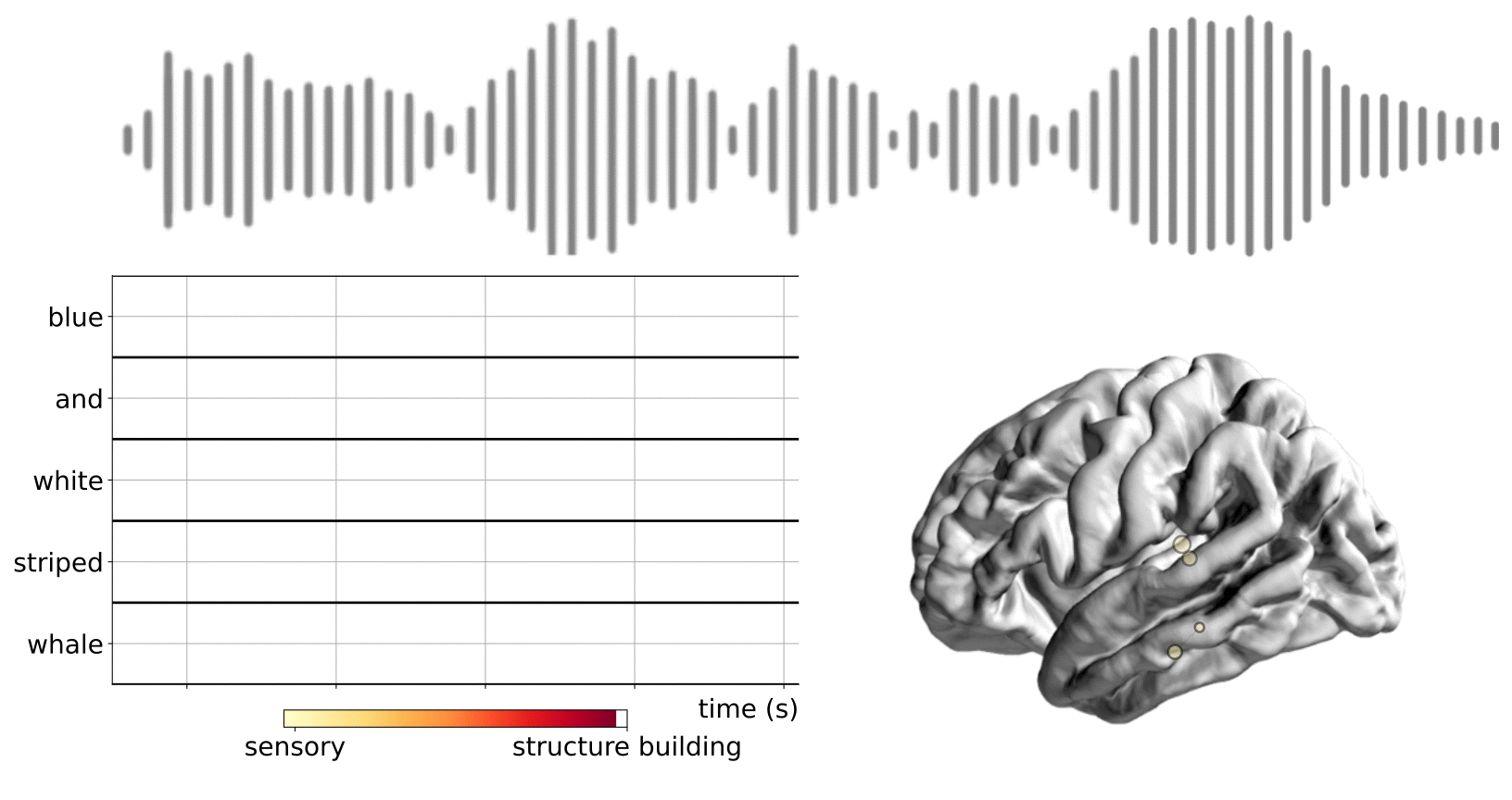Synthesizing the language, computational, and neural sciences
We use conceptual, formal, and computational modelling, human behavior, and brain imaging (magneto- and electroencephalography) to study language processing in the mind and brain.




Human language is a unique, formally-describable biological communication system in the natural world. Language behavior is not only key in everyday life, but is a hallmark of being human. Human language itself is highly adaptable and dynamic, yet requires stable and robust knowledge of linguistic structures and patterns.
For our brains, this presents a rich computational problem–robustly representing linguistic knowledge (e.g., the speech or sign patterns, “words”, and grammar of your language) while using dynamic distributional information (e.g., when, how often, in what contexts linguistic units and structures occur) to flexibly perceive and produce language (Figure 1). How is linguistic knowledge, the structure and statistics of language, encoded in the brain? And specifically, how does population rhythmic activity, or neural dynamics, serve to encode this information (Figure 2)?

The Lise Meitner Research group Language and Computation in Neural Systems investigates the mechanisms and computational principles that underlie the representation and processing of human language in the mind and brain. Our aim is to develop a theory about how the brain generates human language that is based on principles from across the language sciences, the cognitive and computational sciences, and neuroscience—and to do so in a way that stays faithful to the known constraints on neural computation, to the formal properties of language, and to human behavior.
We create theoretical models and computational implementations. Then, neuroscientific experiments are designed to validate our models. One of our key foci is on the role of “rhythmic computation” as a mechanism for symbolic representations in brain-like systems. To read more about our research, check out this recent People of Donders and our projects and publication pages.
Funding
Our work is supported by the Max Planck Society and the Netherlands Organization for Scientific Research (NWO).